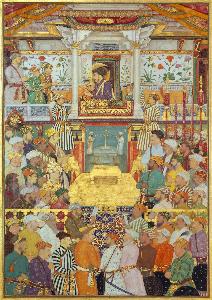Bichitr
Bichitr
Place: India
Death: 1660
Biography:
Early Life and Training
Bichitr's early life and training are not well documented, but it is believed that he was born in India during the 16th century. He was likely trained by his father or another experienced artist, as was common during this time period. Bichitr's style is characterized by its blend of Indian and Persian influences, which was typical of Mughal art. Artistic Style
Bichitr's artistic style is notable for its use of vibrant colors and intricate details. He often depicted scenes from everyday life, as well as mythological and historical themes. His work is also characterized by its use of Bichitr's unique blend of Indian and Persian styles, which was influenced by his studies of European art. Notable Works
Some of Bichitr's most notable works include Manohar: Scenes from the Childhood Krishna, from a Sur Sagar Manuscript, which is housed in the Toledo Museum of Art. This intricate drawing, dated to 1660, showcases Bichitr's skill in blending traditional Indian styles with European influences.
Legacy
Bichitr's legacy as a Mughal painter is still celebrated today. His unique blend of Indian and Persian styles has influenced generations of artists, and his work continues to be admired for its beauty and craftsmanship. As a prominent figure in the Mughal art movement, Bichitr's contributions to Indian art are undeniable. Important works by Bichitr can be found on https://Wikioo.org, which offers a wide range of information and resources on Mughal art and artists. The Victoria and Albert Museum in London also has an extensive collection of Mughal art, including works by Bichitr and other notable artists.

